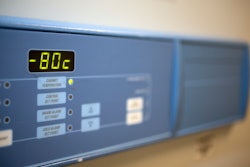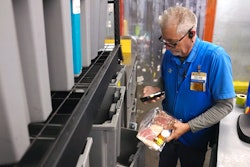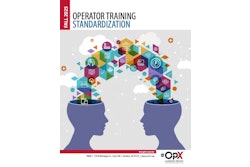Investing in food safety and productivity systems is important, but committing to expensive or overly drawn-out methods can be taxing. That’s why implementing feasible, high-reward strategies, or “low-lift” strategies, hold value to manufacturers.
Mike Kapalko, Industrial Segment Manager at Tork, a professional hygiene brand, sets the stage for processors by capturing the importance of hygiene in food operations.
“There are few things more important to success for food manufacturers than productivity and preventing outbreaks. These facilities have a critical role in bringing food to the world, but this comes with great responsibility because when hygiene isn’t up to par, people can get sick,” Kapalko states.
Kapalko points to data from the U.S. Public Interest Research Group (PIRG) Education Fund to bring the idea home. Hospitalizations and deaths from contaminated foods doubled in 2024 as recalls from Salmonella, Listeria, and E. Coli increased by 41%, the Education Fund notes in its “Food for Thought 2025” report.
The price of contaminated food products reaching consumers can be grave, but alternative strategies to prevent occurrences doesn’t have to be.
“Identifying low-lift hygiene strategies is essential to streamlining operations while supporting compliance and safety standards,” says Kapalko. “For example, absenteeism, often due to employee illness, has been linked to an estimated 36% loss in manufacturing productivity, so implementing simple yet effective hygiene practices may help to keep employees clean and healthy, reducing time off due to illness.”
The 36% loss Kapalko speaks of stems from a 2024 study from the International Journal of Humanities Social Science and Management (IJHSSM). In “Analysing the Impact of Employee Absenteeism on Productivity in Manufacturing Industries,” researchers showed that higher levels of stress can cause employees to take more sick days. While core job functions may need to be addressed to reduce stress, there are hygiene strategies that can ultimately help reduce it as well.
“By proactively addressing hygiene, manufacturers not only protect their employees but also enhance overall operational efficiency and plant cleanliness,” Kapalko adds.
Implement hygiene-specific training and keep food safety equipment components accessible
Kapalko offers ways employers can implement hygiene-specific training to help staff feel supported and prepare to maintain high standards. Making training digestible and recurring is key.
“To maintain high hygiene standards while supporting employees, food manufacturers should focus on training that is ongoing, practical, and easy to understand. Employers can offer short, recurring educational sessions and provide on-the-job support materials that are readily available on the floor, such as laminated quick-reference guides or instructional posters near key workstations,” Kapalko states.
For training that goes more into depth, employers can provide materials in accessible workplace meeting areas. In addition, accounting for employees who speak different languages helps foster greater competence and a feeling of support.
“For more detailed guidance, materials like animated tutorials can be made available in break rooms or on shared screens during team meetings. Offering resources in multiple languages also ensures all employees feel informed and included. When training is approachable, repeatable, and tailored to the realities of the plant floor, it builds confidence, supports compliance, and reinforces a strong culture of safety,” Kapalko adds.
Keeping equipment accessible is just as important as implementing graspable training.
“Easy accessibility to products like wipers [for machinery and equipment] is crucial to minimize unnecessary interruptions and ensure quick responses to sanitation needs as they arise,” states Kapalko.
In July 2019, Tork conducted machine operator research that found 44% of operators report being interrupted 20 times or more per shift to retrieve or dispose of cleaning products. Having such products closer to workstations helps employees be more efficient.
“When hygiene products are stored far away from employees’ workstations, accessing and disposing of wipers and rags takes valuable time away from their job,” Kapalko says. “These unnecessary interruptions have the potential to not only negatively impact productivity, but also safety. For example, cleaning could get skipped or unapproved material could be used if employees don’t have time to fetch a proper wiper. Strategic placement of hygiene products facilitates efficient cleaning during busy times, and in high-traffic areas, by ensuring workers do not need to walk long distances on the factory floor to access and dispose of hygiene products.”
Conduct audits and consider friendlier hygiene products for employees
Another low-lift way to refine hygiene processes and help keep employees productive is by performing routine audits, Kapalko explains.
“Regular audits by facility leadership of the brands and types of hygiene products and dispensers in place can help to identify where they could switch or improve. For example, could installing dispensers that are easier to refill help staff be more efficient? Could shifting the locations or increasing the number of stand dispensers on the floor so they’re closer to employees save them time when they need hygiene products?” Kapalko says.
Furthermore, something as simple as offering a skin-friendly hand soap can encourage employees to stay on top of hygiene practices.
“With how critical hand hygiene is to health and safety at food processing plants, facilities can’t afford for employees to be deterred from washing their hands due to soaps that are harsh on skin. Selecting restroom hand soap that is gentle on skin can encourage hand hygiene for those who may struggle with eczema or other skin conditions,” says Kapalko.
Such changes may appear small, but these types of approachable strategies can help food manufacturers take their hygiene processes to the next level.
According to Kapalko, “By optimizing the plant’s hygiene setup, manufacturers can improve food safety, and ensure the facility is a positive, productive environment for employees.”




















